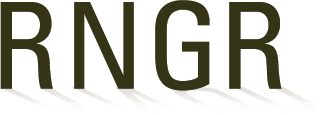ASTERACEAE (Antennaria)
Antennaria (rosea)
ASTERACEAE
Sunflower Family
Antennaria
rosea
Greene
Antennaria
microphylla
Variety
rosea
Rydb.
Greene
Rosy Pussytoes
ANTROS
Fescue grassland, Two Medicine, Glacier National Park
A. rosea is a common cordilleran species, occurring in prairies and foothills to subalpine and alpine slopes.
plants
seed
Container (plug)
172 ml containers
4 Months
Height: 2 cm, 6 to 10 true leaves
Caliper: n/a
Root System: Firm plug in 172 ml conetainers.
Seeds are collected in late June to July when achenes are easily separated from receptacle. Seeds are dark grey at maturity and collected in paper bags and kept in a well ventilated drying shed prior to cleaning.
Seeds are cleaned with a hammermill and run over with an officer clipper and stored at NRCS.
Seed longevity: up to 5 years in sealed containers at 3 to 5C.
Seed dormancy is classified as nondormant.
Seeds/Kg: 14,520,000/ kg
% Purity: 100%
% Germination: 80 to 98%
No stratification is needed on dry stored seeds.
Seeds are usually sown in the outdoor nursery in late fall and are subjected to a 5 month outdoor cold, moist stratification.
Outdoor nursery growing facility.
Sowing Method: Direct Seeding. Seeds are surface sown.
Growing medium used is milled sphagnum peat, perlite, and vermiculite with Osmocote controlled release fertilizer (13N:13P2O5:13K2O; 8 to 9 month release rate at 21C) and Micromax fertilizer (12%S, 0.1%B, 0.5%Cu, 12%Fe, 2.5%Mn, 0.05%Mo, 1%Zn) at the rate of 1 gram of Osmocote and 0.20 gram of Micromax per 172 ml conetainer. Conetainers are filled and sown in late fall and irrigated thoroughly prior to winter.
Antennaria seedlings appear to germinate more slowly than many other forb species. Germination continued over a 21 day period. Seedlings are thinned at the true leaf stage.
4 weeks
Once seedlings are established, plants develop rapid shoot and root growth 4 weeks following germination. Plants are fertilized with 13-13-13 liquid NPK at 100 ppm bi-weekly during the growing season. Plants are mat-forming and quickly fill containers during the rapid growth stage.
8 weeks
Plants are fertilized with 10-20-20 liquid NPK at 200 ppm in early fall; pots are leached with water, irrigation is gradually reduced through September and October.
4 weeks
Total Time To Harvest: 4 months
Harvest Date: July
Storage Conditions: Overwinter in outdoor nursery under insulating foam cover and snow.
5 months
Vegetative Propagation Method: Divisions of established nursery stock can be done if seeds are unavailable.
Seeds require light for germination. If direct seeding onto restoration sites, seeds must be rolled or pressed into prepared seed beds. Raking or burying seeds will result in poor establishment.
Flora of the Pacific Northwest, Hitchcock and Cronquist, Univ. of Washington Press, 7th printing, 1973.
Seed Germination Theory and Practice, Second Edition, Deno, Norman, published 1993.
Glacier Park Native Plant Nursery Propagation Records, unpublished.
Seeds: Ecology, Biogeography, and Evolution of Dormancy and Germination, Baskin and Baskin, Academic Press, 1998.
Luna, Tara; Evans, Jeff; Wick, Dale; Hosokawa, Joy. 2008. Propagation protocol for production of Container (plug) Antennaria rosea Greene plants 172 ml containers; USDI NPS - Glacier National Park West Glacier, Montana. In: Native Plant Network. URL: https://NativePlantNetwork.org (accessed 2025/07/16). US Department of Agriculture, Forest Service, National Center for Reforestation, Nurseries, and Genetic Resources.





